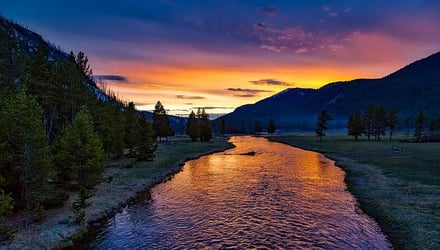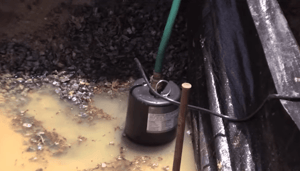
Swimming Pool Placement: How Far Should Your Pool Be From the Water?
Installation & Construction | Swimming Pool FAQs
Disclaimer: This quick guide is designed to help you figure out where you should build your pool if you live near a body of water like a lake, river, or on the beach.
Although we can provide a general overview of what you need to know, the distance that your pool needs to be from the water will also vary depending on your state, county, and zoning regulations, so be sure to keep that in mind.
If, however, you’re looking for some information on swimming pool placement in general or if you want to learn about the first steps towards getting a swimming pool, click here.
For those of you who need to find out where to place your pool if you live near a body of water, you’re in luck.
At River Pools, we have installed well over 1,000 fiberglass swimming pools and many of them have been on waterfront properties. Because of this, we know exactly how to place a pool in these areas as well as the things that you should look out for in the process.
In this post, we're going to tell you how close your pool can be to the water to help you select the best swimming pool location for yourself and your family. We’re also going to explain why and provide some information on problems that you may encounter along the way.
Let’s jump right in...
How far should my pool be from the water?
In most cases, we recommend building your pool at least 100 feet from any body of water. That’s only about two and a quarter school buses from the shore, so you’ll still get the amazing views from your pool without being too close to the water.

Why does my pool need to be a safe distance from the water?
It might seem like a cool idea to have your very own pool right on the water’s edge, but in reality, this often times doesn't work out so great. Any closer than 100 feet, and the water table could be too high to manage during a pool installation.
In addition to the high water table, being closer to the water could put your pool at risk for flooding, not to mention that you will subject your pool to the natural changes of any river, lake, or ocean.
All rivers ebb and flow, for example, and they change course over time. You don’t want your swimming pool to be in the way when the river decides to move.

What happens if you hit ground water while installing your pool (even more than 100 feet from the shore)?
This is a real concern when building a pool near the water, but most good pool builders will know how to handle it. We have come up with our own simple system for handling ground water when installing our fiberglass pools.

First, we start at the deep end of the pool (when possible) to allow the water to naturally flow to the deepest point where it can be pumped out. Then, we dig about a foot or so deeper than the bottom of the pool, place clean stone in the hole, and insert a submersible pump to easily remove the water (watch how we do it here).
Many pools are installed in areas where there is some ground water, so it probably won’t present a huge problem for your builder.
Keep in mind that high water tables are often easiest to handle when installing a fiberglass pool. This is because they have the shortest installation timeline (often as little as one day). Concrete pools can take months to build and vinyl liner pools can take weeks, which can be costly and problematic in high water table zones.
What happens if my swimming pool is flooded during a storm?
Building your pool by the water means that it can be subjected to storms, including floods or even hurricanes if you’re near the ocean. It isn’t rare for a swimming pool to become flooded in certain areas, but there are a few things that you can do to prep for this, like turning off the gas, propane, and electricity and keeping the cover off the pool (see our full guide on how to prepare your inground pool for a storm here).
We acknowledge that every area is different and not all installations are the same. If you have any questions regarding your inground pool placement or installation, feel free to leave them in the comments below.
At River Pools, we manufacture and install world-class fiberglass pools for customers across North America. Check out our full line of pool models and view our gallery to see what we can do for your inground pool project.
Want to know how much your fiberglass pool will cost? Contact us today to request pricing, and try out our pool pricing calculator below for a fast estimate.

Want to see about how much that cost will be with all your favorite pool accessories?
Use our Design and Price Tool to walk through your options and approximate price!
If you're still shopping around for the right inground pool, be sure to download our free ebook which takes an in-depth look at the three main inground pool types.
Up Next:
A Guide to Inground Swimming Pool Size, Costs, and Prices: Everything You Should Know
Inground Pool Construction and Trees: 7 Common Questions
What Is an In-Floor Pool Cleaning System? How It Works, Cost, Pros, and Cons





